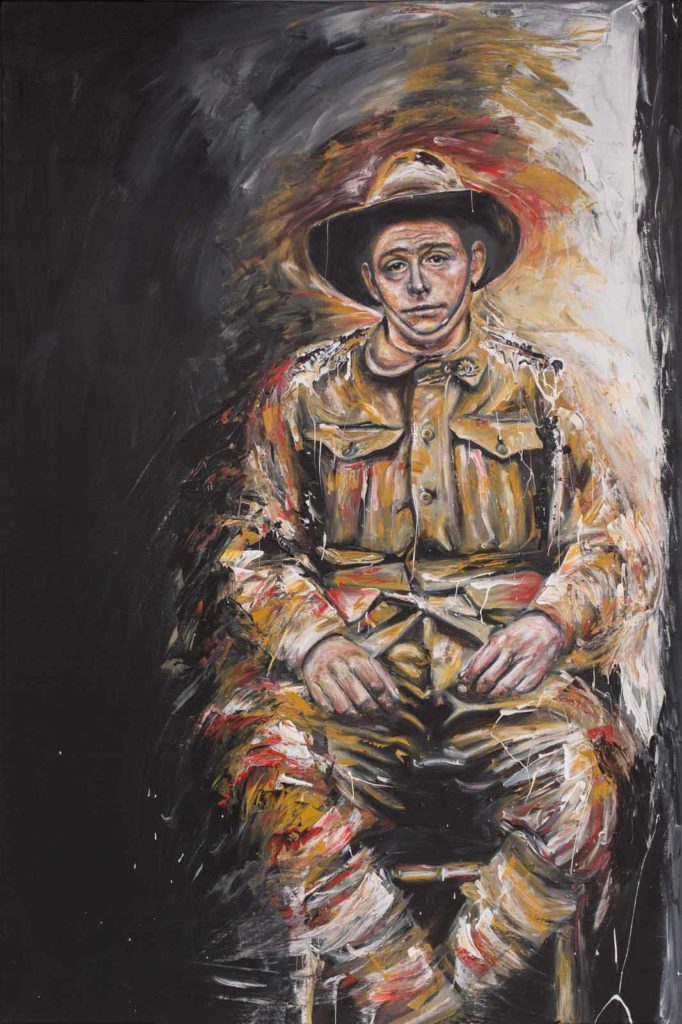Unknown Soldier
In July 2011, with the generous support of Seven’s Network Chairman, Kerry Stokes AC, the entire Thullier collection of around 4,000 glass photographic plates were purchased from the living decendants of Louis and Antoinette Thuillier, the couple who had supplemented their farming income during World War 1 by selling pictures to passing Allied soldiers. If Louis and Antoinette were alive today they would no doubt be mighty chuffed and probably very surprised to see just how much passion these portraits of thousands of young soldiers from a war so long ago has aroused.
In late 2011, the Lost Diggers did finally ‘come home’, in a gigantic packing case, purpose-built to carry the plates, along with the Thuillier’s canvas backdrop. After months of planning, cataloguing, careful cleaning and scanning, the Australian digger plates were gifted to the Australian War Memorial for permanent display. Many of the more intriguing digger images and the stories behind them formed the basis of a touring photographic exhibition organised by the AWM.
More than once in our research it has struck us how impermanent many of the records that we rely on today are in comparison with the handwritten files, letters, printed photographs and glass photographic plate negatives that have the Lost Diggers such a rich collection. As we begin examining the plates, drawing on the expertise of people like Peter Burness, it was a revelation to discover how, in many ways, the photographic plates used by the Thuilliers are actually a superior storage medium to the standard celluloid photographic negative, let alone digital imaging. Not only have they lasted nearly a century already, but also so much information is packed into these hugely detailed negative plates that it was often possible for us to zoom in on a colour patch or medal ribbon to enable a Lost Digger to be indentified. There is something terribly poignent about being able to zoom in on the pained and weary eyes of an individual soldier in a group photograph, to actually see the mud on his boots and the texture of his uniform. As we applied modern photo-processing software, it was astonishing to see faces emerge from the murk of so many plates – images that could so easily have been lost forever. Many times we have asked ourselves how much of today’s history will survive to the same extent. How many personal handwritten letters have we preserved today that will record the thoughts and experiences of our loved ones for the future generations to read? What was once recorded in a letter just a few decades ago is now just an electronic impulse stored on magnetic media whos lifespan can still currently only be guessed at. Will the digital records of today- the photographs, emails and writings on other online ephemera such as Facebook, Twitter and websites allow the people of Australia in a hundred years to explore the history of our present era with as many resources as remain from World War 1? How much of our heritage and experiences will be lost as contemporary storage media slowly fade or are carelessly deleted?


